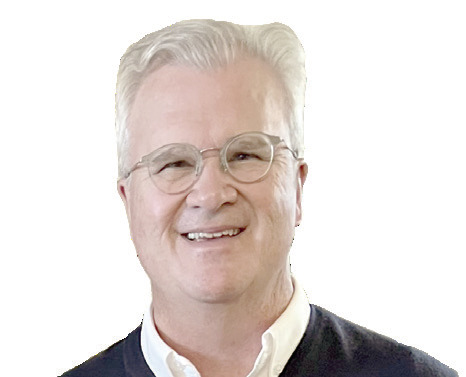Sheila Harris: Walking on Swiss cheese

In Cassville and surrounding areas, there’s a mystery underfoot.
It’s a mystery I’ve only been half aware of until I picked up a copy of a Missouri Department of Conservation (MDC) publication at Kids’ Fishing Day last weekend. In it, I learned some things I didn’t know about the Ozarks, in spite of having lived here for 50-plus years.
Called “Conserving Missouri’s Caves and Karst,” the magazine details some natural characteristics of what lies below us in the surreal world of our karst underlayment, the kind geologists sometimes compare to Swiss Cheese.
Characterized by soluble, constantly eroding dolomite and limestone bedrock, karst is pocked with fissures, conduits, losing streams, rivers, sinkholes, cave systems and springs — holes, in other words.
According to the Missouri Department of Natural Resources (DNR), Missouri has 4,400 springs and 7,500 recorded caves – hence its nickname, “The Cave State.”
The majority of both features are located in the Ozark Plateau, commonly called “the Ozarks.”
Barry County alone, the magazine said, contains between 201 and 400 caves.
Magazine aside, the history of Cassville records two large cave systems: Crystal Caverns, on the north edge of town, whose limits, as far as I’ve read, have never been discovered. To the east of town, Rockhouse Cave purportedly housed Barry County records for safekeeping during the Civil War, and prior to that, artifactual evidence suggests that the cave was once used for the manufacture of tools by Native Americans.
In February 2005, a giant hole opened in the earth in a pasture southwest of Exeter: a sinkhole more dramatic than most, but a common karst feature just the same. Sinkholes and their karst cousins, losing streams, provide direct routes from the earth’s surface to groundwater below.
They’re all over Barry County. The interconnected web of karst features below the Ozarks allows virtually unfiltered groundwater to move freely and rapidly.
Tom Aley, author of an article in the above-mentioned MDC publication, said groundwater travel- rates in karst areas of Missouri average about one mile per day. In comparison, groundwater travel- rates within non-karst areas are commonly only a few feet per year, Aley said.
The DNR’s website said water entering a sinkhole in the Ozarks can travel through subterranean groundwater conduits for 30 miles or more before surfacing in springs and wells.
Let’s do the math. At one mile per day, water going in can come back out 30 miles away in 30 days.
That’s not all. Water entering the subsurface at a single point may sometimes discharge [up] from multiple springs and wells, separated from each other by miles, Aley said.
Contaminants, too (if they make their way into groundwater), can travel freely and surface in multiple places.
Case in point, beginning in 1907, in Springfield (notorious for its karst features), the former Tronox/ Kerr-McGee facility pressure-treated railroad ties, then dumped leftover creosote into unlined ponds on their northside property.
In 1972, creosote was spotted surfacing in nearby springs. Testing revealed its presence in groundwater, private wells and public water supplies. The current owner began remediation efforts in 2011. Since then, some 7,100 gallons of creosote have been removed from groundwater.
Drinking water is now safe for consumption, experts say, but testing and mitigation efforts continue.
While the MDC speaks of preserving the quality of our springs, waterways and karst features, the Water Pollution Section of the DNR is preparing to issue permits to billion-dollar corporations for the land-application of meat-processing sludge to land above Roaring River Spring.
No, meat-processing sludge is not creosote, but it’s not without problems of its own, problems that can, theoretically, travel more rapidly.
With karst below us, what’s put on top the ground goes below, then rises again, in wells as easily as in springs.
We live above an enigma, a fragile one.
Roaring River Spring’s recharge basin is known to be at least some 30 miles in diameter, with water entering it from as far away as Shoal Creek.
Without concrete evidence (at which point, irreversible damage can already be done), in underground karst environments, where water comes from and where it goes can be anybody’s guess.
That’s the beauty – and the mystery – of what we have underfoot.
Sheila Harris is a long-time Barry County resident and a sales executive and investigative reporter for the Cassville Democrat with a particular interest in environmental topics. She may be reached at [email protected].
PUBLISHER’S NOTE: Do you have an opinion about this opinion? Share it with us and the community in a letter to the editor! Letters may be submitted using this link: https://forms.gle/RmdQfYe86PtkTKp8A.







